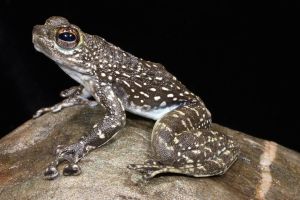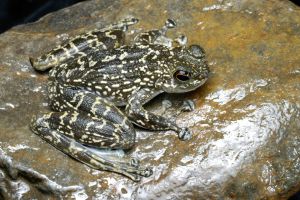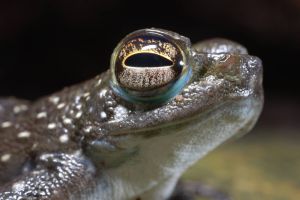
Frogs of Borneo

Frogs of Borneo

Frogs of Borneo

Frogs of Borneo

Frogs of Borneo

Frogs of Borneo

Frogs of Borneo

Frogs of Borneo

Frogs of Borneo

Frogs of Borneo

Frogs of Borneo
Bornean Families
Staurois:
latopalmatus
Rock Skipper
This species is relatively common in northern Borneo, including Sabah, Brunei, and northern Sarawak. Records from iNaturalist suggest a wide distribution across all inland mountain ranges of both Malaysian and Indonesian Borneo. However, the broad distribution, together with preliminary findings, indicates that two cryptic species may currently be subsumed under this taxon name (Arifin et al. 2011).
Staurois latopalmatus is larger and more robustly built than other Bornean Staurois. Males reach up to 50 mm in snout–vent length (SVL), while females grow to 70 mm. The legs are very strong, allowing these frogs to leap from rock to rock across streams. The snout is short and broad in dorsal view, with the tip slightly projecting in profile. In lateral view, the snout is clearly shorter than the eye diameter. The upper lip is characteristically curved. Not only the toes but also the basal third of the outer two fingers are webbed. The eyes are large, with a horizontally oval pupil; the pupil margin is more strongly arched dorsally and less so ventrally. The iris is bronze in the lower sector, often with an orange tint in the upper sector, and features a black reticulation. The lower eyelid is often bluish.
The dorsal skin is coarsely granular with scattered larger protuberances. The ventral skin is smooth and white to pale cream. Dorsal coloration ranges from grey-brown to black, with white or cream markings that vary in extent across populations.
Staurois latopalmatus inhabits medium to wide rocky streams, especially rapids and waterfall habitats. Individuals typically perch on rocks, often in midstream, and show a particular preference for vertical rock faces near waterfalls. At night, males call from boulders in the stream, producing a short, high-frequency trill.
Details of the species’ reproductive behavior remain unknown, and the tadpole has not yet been described despite the frog’s relative abundance in some areas of Borneo.
Version tracking
-
20.08.2025
updated


